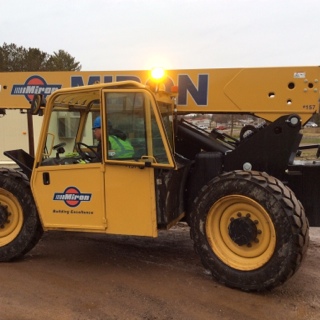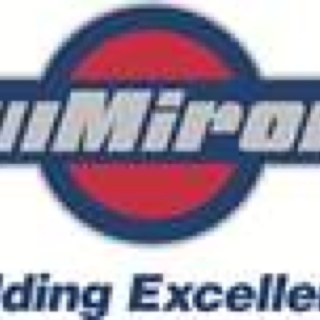Information
-
Project Name
-
Superintendent
-
Building or Area
-
Conducted on
-
Prepared by
-
Location
-
Masonry Foreman
1. General Safety
-
1.1. All employees received project orientation.
-
1.2. All employees trained in Hazard Communication and GHS. SDS book or phone APP available on site.
-
1.3. Emergency Boards posted on site.
-
1.4. First Aid kit and eye wash on site.
-
1.5. Fire extinguisher readily available.
-
1.6. Training is current for all crew members. (Forklift, hydro-mobile, non-stop, scaffold erection, signal person, certified rigger, etc.)
2. Housekeeping
-
2.1. Work and storage areas clean and orderly.
-
2.2. Break areas clean and orderly.
-
2.3. Fuel stored properly (diesel, gasoline, propane). Separated by 20', fire extinguisher 25' to 75' away from fuel storage.
-
2.4. Slip, trip, and fall hazards identified and eliminated.
-
2.5. Adequate lighting.
3. Hand and power tools
-
3.1. Assured Grounding completed. Correct color tape used.
-
3.2. Guards are in place.
-
3.3. Safety handles in place and used (T-handle, D-handle)
-
3.4. Training documented (Hilti tool etc.)
-
3.5. Correct tool for the job.
-
3.6. Knives - cut away, cut resistant gloves.
-
3.7. Damaged tools labeled "do not use".
4. Cutting Station
-
4.1. Set up / supported properly.
-
4.2. Positioned away from high traffic areas (sidewalks, general public doorways etc.)
-
4.3. PPE Worn - safety glasses, hard hats, face shields, hearing protection, respirators, gloves, etc.
-
4.4. First Aid kit & eye wash close by.
-
4.5. Dust control - Ventilation, wet cutting, vacuum (engineered controls must be used)
-
4.6. Proper ergonomics trained and used - Machine before muscle.
-
4.7. Fire extinguisher present near station.
-
4.8. Housekeeping - Cutting station free of slip, trip, and fall hazards. Materials stacked neatly.
-
4.9. Saw functioning properly and not left running unattended.
5. Mixing Station
-
5.1. Set-up / Supported Properly.
-
5.2. Covers / Guards in place on mixer.
-
5.3. PPE worn - Safety glasses, hard hat, respirators, gloves, etc.
-
5.4. Air quality - silica dust exhaust, CO monitoring.
-
5.5. Ergonomic training and practice - Machine before muscle.
-
5.6. Fire extinguisher present.
-
5.6. Housekeeping - slip, trip, and fall hazards identified and materials stacked neatly.
6. Material Handling
-
6.1. Trained equipment operators. Industrial truck license evaluated within the last 3 years.
-
6.2. Equipment inspected and documented before use.
-
6.3. Seat belt worn.
-
6.4. Fire extinguisher on equipment.
-
6.5. Load secured before traveling.
-
6.6. Travel at safe speeds.
-
6.7. Trained rigger and signal person available.
-
6.8. Proper rigging available.
-
6.9 Rigging inspected before use.
-
6.10 Approved rigging techniques (no free rigging)
7. Scaffold
-
7.1. Base / Ground conditions adequate
-
7.2. Overhead concerns addressed (power lines, moving equipment, process lines).
-
7.3. Scaffold erected properly (X-bracing, pins, handrails, end rails, planking, supported)
-
7.4. Wall bracing. Vertically - secured 4:1 every 26' there after. Horizontally secured at ends and at least every 30'
-
7.5. Limited access zones (LAZ) established and flagged on non-scaffold side of wall. Set up before starting the wall 4' higher than wall.
-
7.6. Area below scaffold barricaded.
-
7.7. Inspected, tagged, and documented daily by competent person.
-
7.8. Fall protection - end rail brackets, end rails, hand rails
-
7.9. Proper access - Stairs, ladders, ramps
-
7.10. Trained erectors / Operators - rings, non-stop, hydro
8. Wall Bracing
-
8.1. Wall braced according to "Standard Practice for Bracing Masonry Walls Under Construction" standards.
-
8.2. Walls over 8' braced to prevent overturn.
-
8.3. Brace spacing: Guideline of 30' on center
-
8.4. "Unstable in wind" signage in place.
-
8.5. Substantial brace support - Dead man, engineered corner, ground support
-
8.6. Wind gauge (Anemometer) available.
-
8.7. Access regulated to masonry tasks only.
9. Enclosing - cold weather construction
-
9.1. Set-up / supported properly - per manufactures bracing and enclosing requirements.
-
9.2. Air quality maintained (CO monitor) & Air quality form used.
-
9.3. Temp heater operation correct - heat shields in place, fire protection, fuel and power lines protected.
-
9.4. Propane tanks secured and protected from damage.
-
9.5. Fall protection required while installing enclosure. (Enclosure not part of scaffold erection)
-
9.6. Scaffold inspected daily - check freeze thaw settling concern at bases. No snow or ice on scaffold or stairs.
-
9.7 Housekeeping - no slip, trip, or fall hazards and all materials stacked neatly. All un-needed equipment and materials removed.
11. Personal Protective Equipment (PPE)
-
11.1. Lack of, or inadequate PPE (including sun protection)
-
11.2. Lack of system to issue, inspect, replace and monitor PPE?
-
11.3. Lack of training in safe use, clean-up and inspection of PPE?
12. Work Environment
-
12.1. Lack of/or inadequate amenities? (toilets, wash areas, lunch rooms, etc)
-
12.2. Insufficient lighting?
13. Electrical Hazards
-
13.1. Unsafe electrical leads? (damaged, out of test date or untested)
-
13.2. Lack of GFCI protection?
-
13.7. Electrical equipment near water?
-
13.8. Electrical equipment near flammables?
Corrective Actions
-
Enter any corrective actions that will be undertaken
-
Have the hazards from the last inspection been mitigated?
-
Take photo of project.
Sign Off
-
On site representative
-
Auditor's signature







